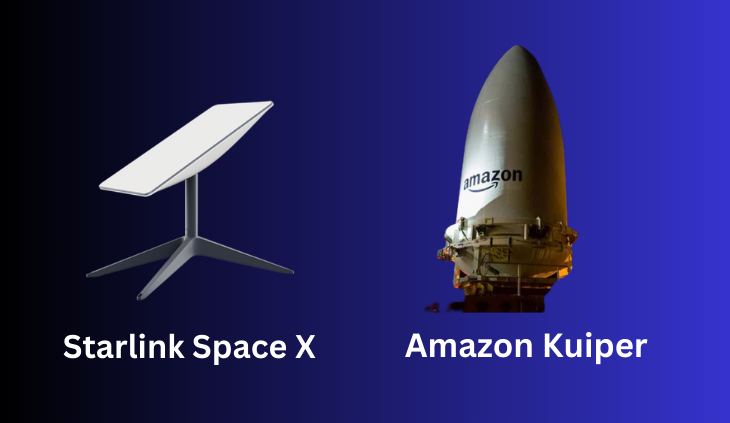The race to bridge the digital divide from above is heating up! On the horizon, two tech giants, Amazon and SpaceX, are locked in a battle for satellite internet supremacy. In one corner, Elon Musk’s Starlink boasts millions of users and thousands of satellites already blazing a trail across the cosmos. In the other, Jeff Bezos’ Project Kuiper readies its first test satellites for liftoff, aiming to disrupt the status quo with its own vision for space-based connectivity.
Kuiper’s Delayed Debut:
After facing launch delays, Amazon’s “protoflight” satellites are primed to take flight this October. These early birds will test the waters of Kuiper’s technology, beaming down broadband internet from the celestial highway. However, catching up to Starlink’s head start won’t be a quick trip. Mass production and large-scale deployment lie ahead, and Amazon must fulfill its FCC license obligations by putting half its constellation in orbit by mid-2026.
Starlink’s Soaring Success:
Meanwhile, SpaceX’s Starlink constellation continues to climb the ranks, exceeding 2 million active users. This meteoric rise reflects the growing demand for high-speed internet in underserved areas, where terrestrial options falter. With regular launch campaigns adding more satellites to the network, Starlink is rapidly weaving a web of connectivity across the globe.
Beyond Billionaire Bragging:
This duel transcends a mere corporate clash. The prize at stake is access to the information superhighway for millions who lack it. Rural communities, remote islands, and disaster-stricken areas stand to benefit immensely from reliable, high-speed internet beamed from the heavens. The potential for educational opportunities, economic growth, and improved communication is staggering.
The Competition Heats Up:
But it’s not all smooth sailing for Starlink. Concerns about light pollution from its dense constellation and potential disruption to astronomical research linger. Additionally, affordability remains a key hurdle for many potential users.
Enter Project Kuiper, promising lower satellite manufacturing costs and potentially more competitive pricing plans. Its focus on sustainability and minimizing light pollution could also win over environmentally conscious consumers.
The Road Ahead:
The ultimate winner in this celestial showdown remains to be seen. Both contenders bring unique strengths and weaknesses to the table. As Starlink scales its network and Kuiper refines its technology, the battle for dominance promises to be fierce. Yet, the true victory lies in bridging the digital divide and offering hope of connection to the millions who yearn for it.
So, who will rule the heavens? Will Starlink maintain its reign, or will Project Kuiper’s delayed debut spark a revolution in space-based internet? Time, launches, and user experiences will tell. But one thing is certain: the competition has just gotten hotter, and the future of internet access looks brighter than ever.
